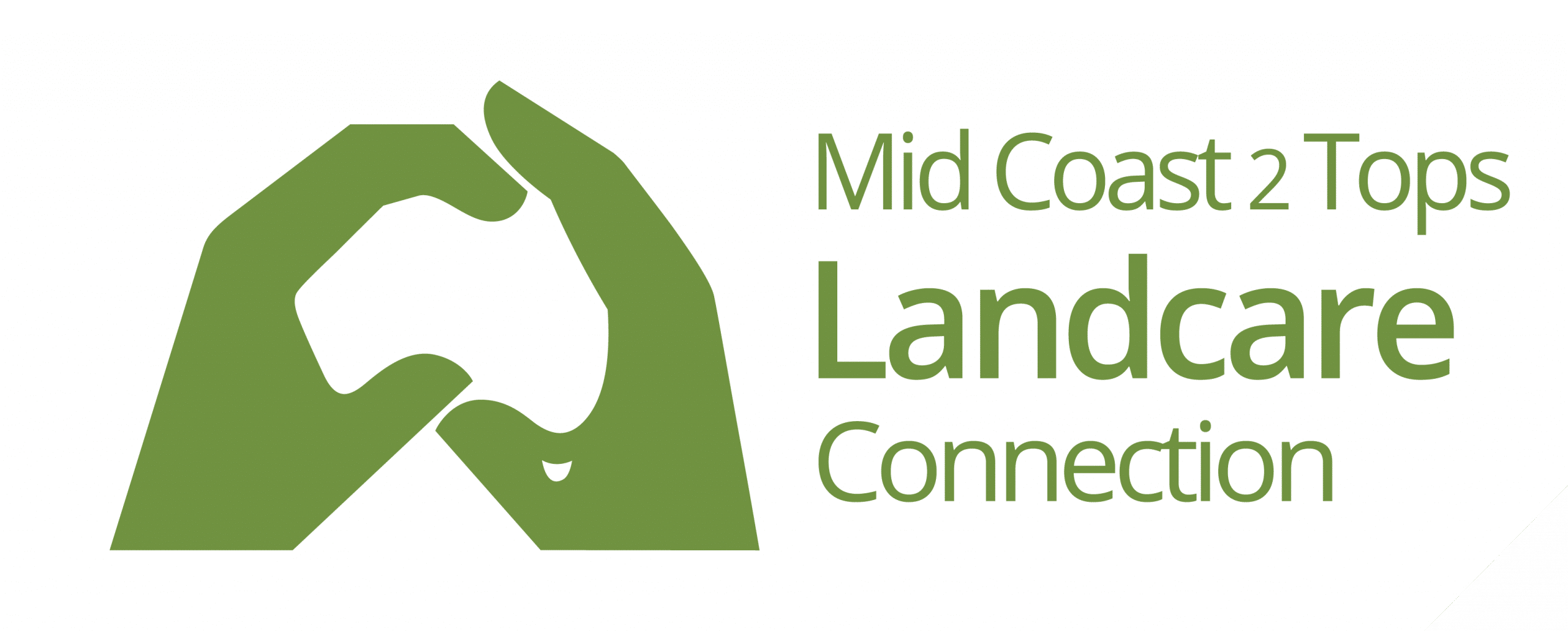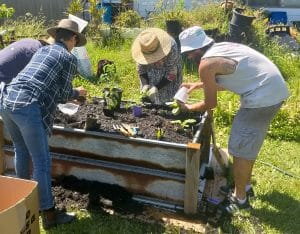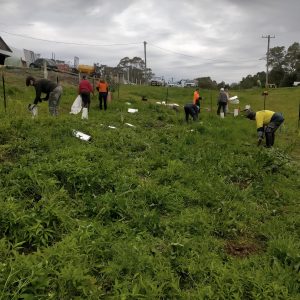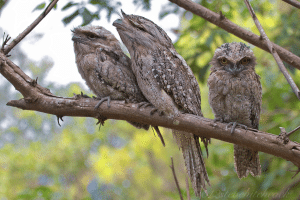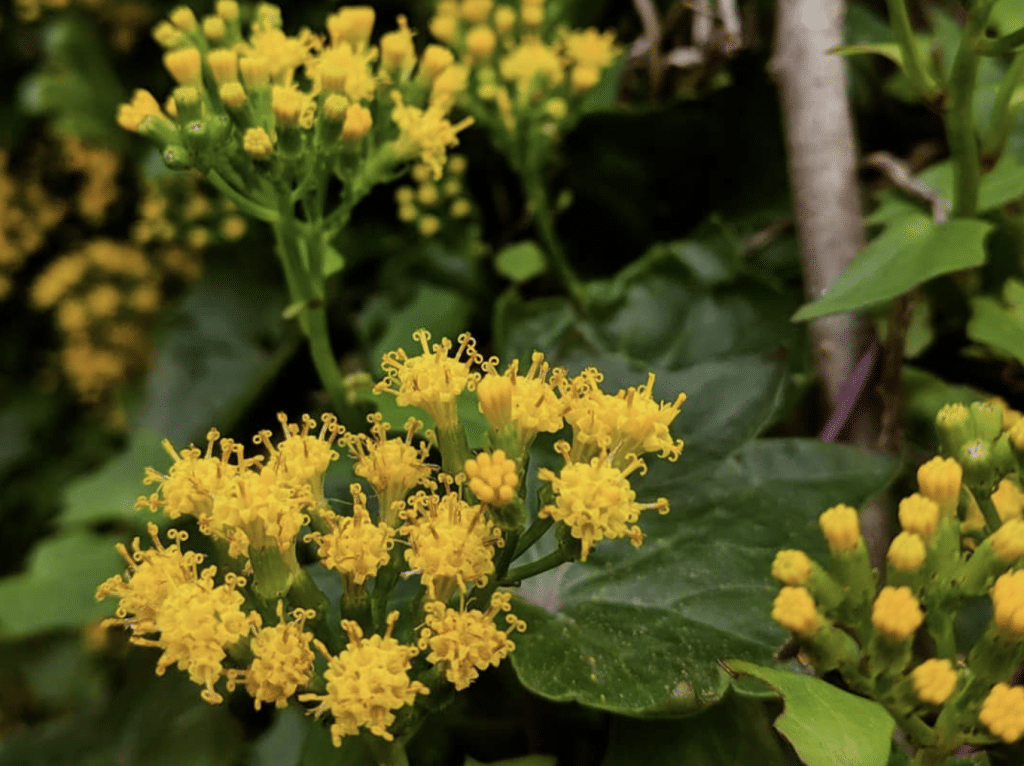
I was walking alongside the mighty Manning and couldn’t help but notice a flush of yellow amongst the green of what once was a long patch of native vegetation. Amongst the native grape (Cayratia clematidea) and other native vegetation, the Capy Ivy (Delairea odorata) was flaunting it’s bright yellow flowers so closely entwined in natives that if I didn’t recognize the species I would have had a hard time figuring out whose stem belonged to what flowers.
Cape Ivy is a highly invasive weed native to South Africa. It is a robust scrambler or climber with fleshy, glossy green leaves that smell pungent, and the bright yellow flowers sickly sweet. Its leaves are circular to ovate in shape, with about 7-9 pointed lobes which give them their ivy-like appearance. The leaves are highly poisonous to humans and animals.
Cape Ivy grows in southern and eastern Australia, in NSW mainly in coastal areas south of Brunswick Heads and in Victoria, Tasmania, South Australia and Western Australia.
In its true weedy nature, Cape Ivy isn’t too fussy about where it wants to call home and will take over disturbed sites in gullies, roadsides, degrading areas, remnant bushland and shaded, moist areas. It can be found in woodlands, wet and dry forests, warm temperate rainforest, heathlands, coastal tea-tree scrub, sand dunes and around riparian vegetation.
Capy Ivy is a highly invasive vine. It can climb and smother shrubs and trees and create curtains that will eventually collapse forest canopy, preventing the natural regeneration of native plants. It can form mats across the ground up to 30 cm thick. When trees are pulled down by Cape Ivy, light gaps can appear creating further disturbance and more weed species. The beginning of the end if left uncontrolled.
To control Cape Ivy, clear from around native vegetation and pull out all runners. Particularly in moist areas, all parts should be removed to prevent vegetative spread.
Where the Capy Ivy has become too difficult to pull, cut, scrape and paint stems with herbicide (a ratio of 1 part Glyphosate and 1 part water will work). A maximum of half the diameter of the stem should be scraped, and larger stems should have 2 scrapes opposite each other. Follow up is imperative because stem pieces can easily break off and re-grow.
Ideally, Capy Ivy is best treated prior to winter, their flowering time, to prevent seed set. Winter is the best time for spraying with a selective herbicide, as this is its peak growing period.
Image source: Weeds of Melbourne
